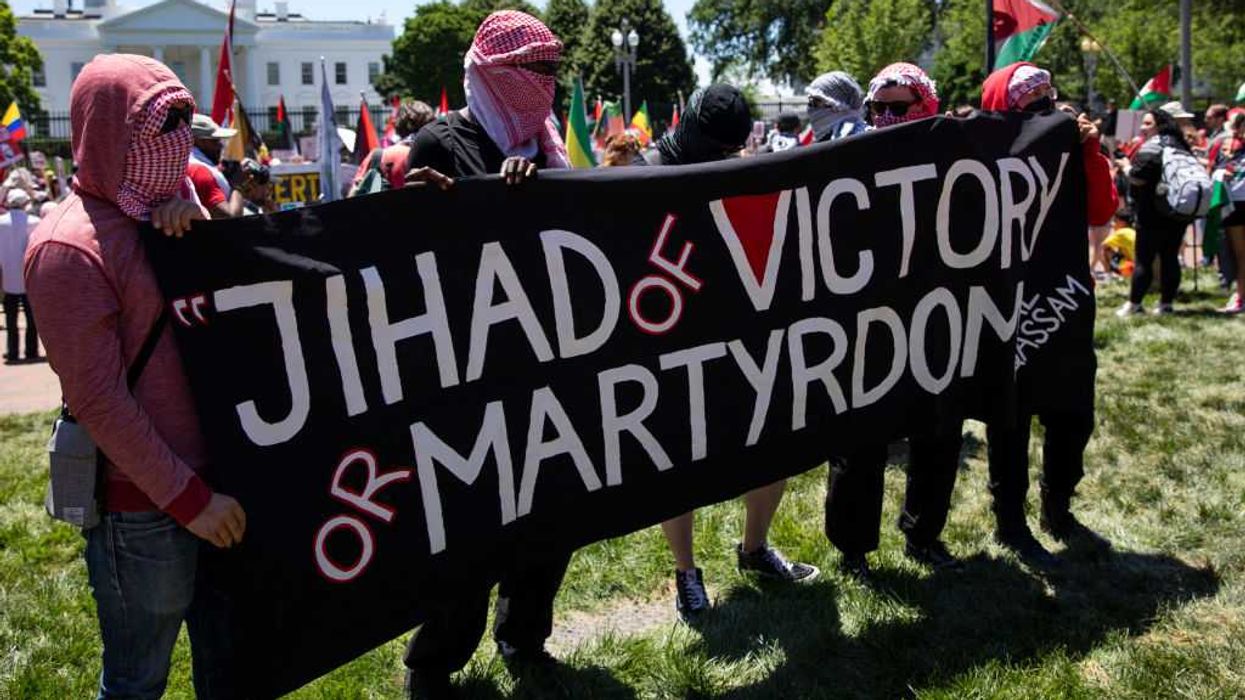No other country in the world has welcomed more immigrants than the United States. Immigrants created the great “melting pot” that is America. However, the notion of “melting” or assimilating into American society is no longer taught, adding to the problems of an overburdened and broken immigration system. Presidential candidates on both sides claim to have the answer. But to actually find a solution, we have to understand how we got here and what’s been tried in the past. This four-part series covers the remarkable history of immigration in America and why the modern system desperately needs reform.
The four-part series is compiled below for your convenience.
Immigration in America Part I:
The Beginning There is a common refrain in the debate about immigration: We are a nation of immigrants. While that is true, there is a word nearly always left out of that refrain: legal. We have always been a nation of laws and a nation of legal immigrants.
The Pilgrims were the first immigrants able to create a permanent home here. Starting around 1620, tens of thousands of British, German and Dutch, but mostly British Puritans, came to North America to escape religious persecution, find opportunities or simply experience an adventure. Then there were the forced immigrants. Hundreds of thousands of Africans who were mercilessly captured in their own lands and put on ships bound for America to be sold into slavery.
As the United States Constitution took hold, American freedom provided the opportunity for American citizens to rise above their station in life. Word began to spread around the globe. The downtrodden throughout Europe and Asia looked to America for hope and opportunity, a situation that caused both enormous potential and inherent problems. Thomas Jefferson expressed concerns about the “great importations of foreigners” saying, “In proportion to their number, they will share with us the legislation. They will infuse into it their spirit, warp and bias its direction, and render it a heterogeneous, incoherent, distracted mess.”
Fortunately, the first wave of immigrants desperately wanted to leave behind the biases of European governments and enjoy the fruits of what our Founders had created.
By the 1850s, as America’s population topped 20 million and the immigrants kept coming, especially the Irish, escaping from the potato famine. In the late 1800s, massive steamships provided much faster cross Atlantic transportation for those who wanted a taste of the American dream. As mills and factories sprung across the land, cities grew up around them. In turn, these cities beckoned to workers by the millions from the American countryside and from overseas, to fuel the burgeoning industrialization. Between 1860 and 1910, the urban population grew from 6 million to over 44 million.
Ellis Island in New York was set up to process the mass of humanity arriving on our shores from the Atlantic, and the Angel Island in San Francisco to deal with those coming across the Pacific. It was a wave of immigrants that believed in the promise of America and had loved and longed for from afar — and they thanked God when they arrived. For those immigrants, assimilation wasn’t just a good idea, it was the only idea.
It was certainly not easy for these newcomers. With so many arriving from so many diverse locations around the world, taking jobs, housing and space in this land, and, yes, some resentment did arise. But no nation on earth has ever experienced, let alone survived so great an influx of humanity in such a short period of time, but the United States of America didn’t just survive it. It would thrive.
Immigration in America Part II: The 20th Century
In 2014, nearly 10 million visas were issued by the United States to those seeking to enter the country — including over 1 million admitted permanently. Overall, the United States has one of the highest immigrant populations and is one of the most visited countries on earth.
Some believe those who make it across our borders — legally or not — should be embraced and allowed to stay. This rift has divided Americans for generations. It has also created the false impression around the globe that Americans are extraordinarily xenophobic and racist when, in fact, the United States is the most culturally, ethnically and racially diverse nation in the history of mankind.
As highly regarded as diversity is now, unity was once thought to be paramount. American leadership knew, as Lincoln stated, a nation divided against itself cannot stand. That didn’t apply to just slavery in the Civil War period. It also applied to having a common language, a common culture and a constitutional direction.
Between 1944 and 1954, the number of immigrants coming from Mexico increased by 6,000 percent. The problem of illegal immigration from Mexico, Central and South America, had become such a problem by 1954 that there were already around 3 million here illegally. Thus, President Dwight D. Eisenhower announced a new program to deal with the situation. Border agents were sent through California, Arizona, Texas, and northward into Nevada, Utah and even Idaho, rounding up illegal aliens for deportation. Within three months, border agents had apprehended and sent back deep into Mexico over 130,000 illegal aliens. And another 1.1 million more, fearing apprehension, self-deported back to their homes in Mexico and South America. By 1955, 2.1 million illegals had either been deported or had left the United States on their own. The problem was declared and solved for a time.
But it didn't last long.
Immigration in America Part III: Immigration Reform
There are 45 million foreign-born people who live in the United States. That’s more than six times the number of the next closest nation — Germany. In a 2014 survey, 34 percent of Mexicans said, if given the opportunity, they would migrate to the United States. That would be another 41.5 million people from Mexico alone.
No nation, no matter how prosperous can accommodate everyone. So in the 19th and 20th centuries, Americans began to place limits on immigrants. As a result, the numbers coming from Europe slowed, but the numbers pouring across America’s southern border exploded.
Reagan believed if he granted amnesty to the three million already here illegally — made them pay a penalty and shored up the border — that the United States could regain control over its immigration situation. In 1986, President Reagan signed into law the Immigration Reform and Control Act. It was designed to end the illegal border crossing crisis once and for all. The only problem was, it didn’t.
Since passage of the bill, the illegal immigration situation has careened out of control. Millions continued to pour across our southern border. Even Democrats understood how dire the situation was. President Bill Clinton supported securing the borders and deportation, saying, “We are a nation of immigrants, but we are also a nation of laws.”
It seems that 20 years ago, it wasn’t xenophobic, racist, or hateful to want the border secured and our laws upheld. So what changed? How did left-wing politicians go from addressing the issue with this sense of purpose and understanding, to supporting amnesty?
Perhaps Senator Ted Kennedy summed up the change of heart best at the 2006 pro-illegal immigration rally when he said he saw the future of America. With over a million pouring across our border illegally every year, the Democrats saw the writing on the wall: New voters who would equal power for them.
In 2006, even George W. Bush tried desperately to sell skeptical Americans on so-called comprehensive immigration reform, encouraging support of a bipartisan immigration bill to bring illegal aliens out of the shadows. Burned too many times, the American people rejected his plan.
As a result of 70 to 80 years of failure on the southern border, Americans have become hardened and skeptical when it comes to so-called immigration reform. With so many millions of citizens out of work, they view anyone who shouldn’t be here in the first place as someone who is potentially taking jobs from them.
Immigration in America Part IV: The Immigration Fight Today
There used to be bipartisan agreement on the need to stop people from entering the United States without authorization, and the need to remove illegal aliens from the country. Democrats like Bill Clinton, Harry Reid and others spoke out passionately on the need to secure the border, clamp down on employers and stop any and all benefits to illegal aliens.
However, over the past decade or so, that has drastically changed.
The Democratic Party now supports illegal aliens in the hope of gaining tens of millions of Hispanic voters in the country. Today, Democrats address the issue with fear mongering, referencing young kids with tears rolling down their cheeks who are scared their parents may be deported. Should the tears or fears of those living in the United States illegally determine American policy?
In 1993, former Senate Majority Leader Harry Reid said, “If making it easy to be an illegal alien isn’t enough, how about offering a reward for being an illegal immigrant? No sane country would do that.” Nineteen years later, Harry Reid sang a very different tune from the Senate floor, saying, “Thanks to President Obama . . . 800,000 young people . . . who are American in all but the paperwork no longer need to live in fear of deportation.
Current Democratic presidential candidate Bernie Sanders believes in passing comprehensive immigration reform that includes a path to citizenship. Additionally, he is against building a fence or wall, supports funding sanctuary cities and believes climate change laid the groundwork for mass migration.
In 2005, Hillary Clinton was adamantly against illegal immigration. Today, like Sanders, Clinton supports comprehensive immigration reform, and favors the Dream Act and amnesty. She doesn’t want a border fence, but instead favors using more technology on the border.
Donald Trump’s highly publicized thoughts on immigration are well-known. He wants to build a wall on the southern border and have Mexico pay for it. Trump also wants to temporarily ban all Muslims from entering the United States. He admits that in his business, he uses H-1B visas, but as president, would stop them from being used. He also believes that, “we’re the only country dumb enough to allow birthright citizenship.”
Ted Cruz also outlined a tough plan on immigration which includes enforcing current federal laws, deporting illegal aliens, building a wall and tripling the border patrol. Cruz is not in favor of a path to citizenship and would defund all 250-plus of America’s sanctuary cities.
Americans now face a choice: Will this decades old problem ever be solved? If so, how? And who is the best person to solve it?

 JIM WATSON / Contributor | Getty Images
JIM WATSON / Contributor | Getty Images
 Joe Raedle / Staff | Getty Images
Joe Raedle / Staff | Getty Images AASHISH KIPHAYET / Contributor | Getty Images
AASHISH KIPHAYET / Contributor | Getty Images Harold M. Lambert / Contributor | Getty Images
Harold M. Lambert / Contributor | Getty Images